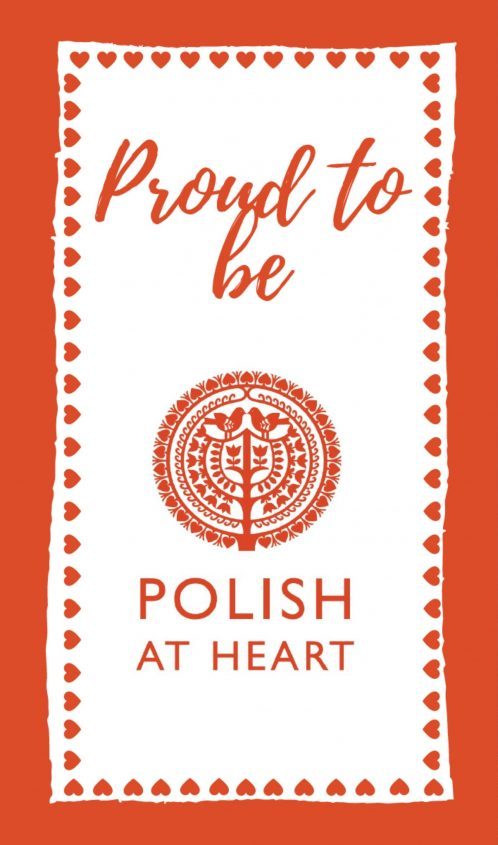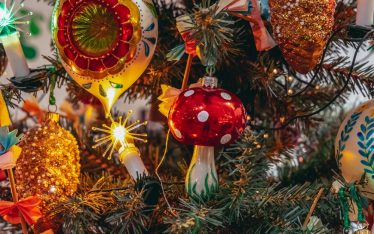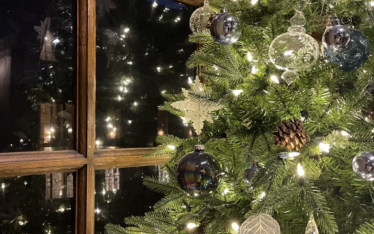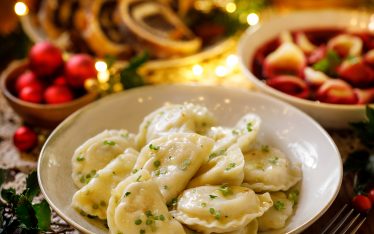Are you thinking about buying new decorations? Think again. Our ancestors made their own and we all have memories of making them with our parents but homemade isn’t just for children. Baubles, paper cutouts, chains, pastries small and large, blown eggs are still all made year in year out in many regions of Poland and have some names you may not have heard of!
“Right after the first Sunday everyone would sit at the kerosene lamp in the evenings. Under the watchful eye of my grandmother, we made toys for the Christmas tree. This expectation and making toys was so beautiful, so wonderful! We realised something wonderful was coming” says one lady from the Mazowsze region.
I remember making chains and paper toys with my Mother who taught me the same ones she made with her Mother in post war Poland. In many households making decorations was a yearly ritual. It didn’t only include traditional designs but in pre-war times, many women would get patterns for new decorations from popular magazines just as we do now, spending evenings talking with others about their everyday worries.
Podłażniczka
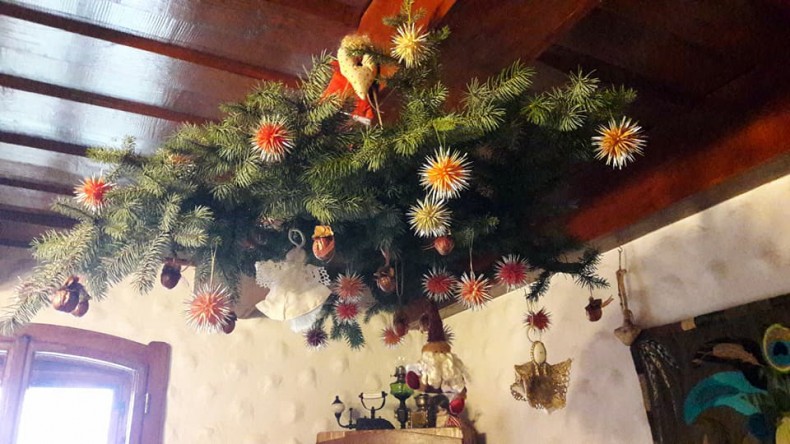
Long before the tradition of bringing in Christmas trees to the house there was a tradition of hanging the branch of a conifer spruce, pine, fir from the ceiling over the table with nuts, apples and straw decorations attached. The Góral highlanders had their own concept of this called “jutka” an upside down branch decorated with sweets and dried fruit, often hung directly above candles so that the sweets would melt and fall to the ground to be consumed by all. This is still hung in some areas of southern and eastern Poland, said to have life-giving powers and miraculous properties, protecting the house and its inhabitants from evil powers and charms.
Byśki and Cacki
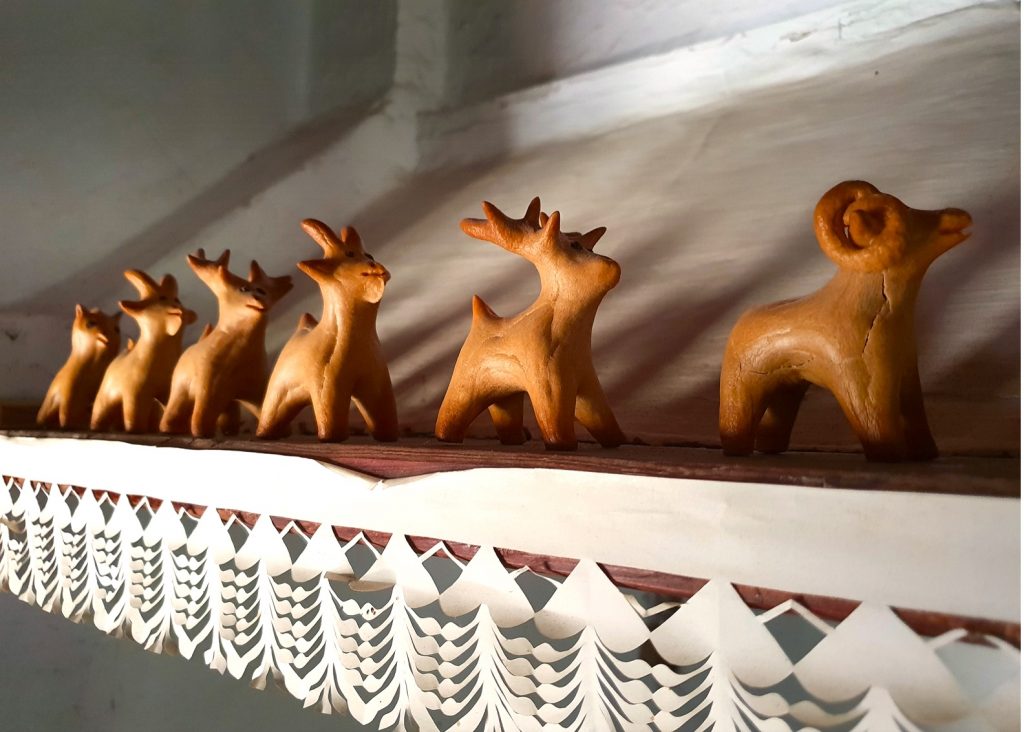
Fot: Klaudyna Turczyński skomplikowane.jpg
In Kurpie they make Byśki – animals baked from rye flour and water dough, hand formed and cooked.
“People put them on shelves, especially above the kitchen. What is now called “okap” – eaves in Kurpie was once called kapa – there was a shelf there to place them on. There was also a “nowelatka” – a shepherd boy with geese sitting around. There were usually 12 of these geese, one for each month,. to predict plentiful food” Wiesława Bogdańska
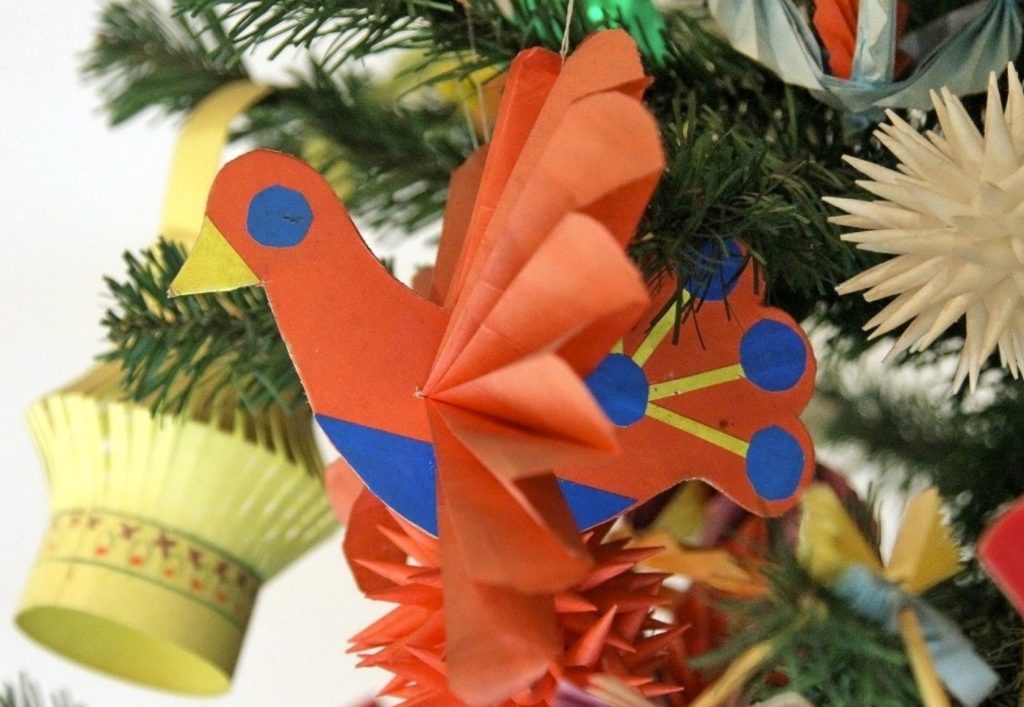
Fot: Anna Kaczmarek e-ogrodek.pl
Cacki are little trinkets made from a variety of materials. If nothing shiny was available, they were made from straw. “They wanted to make Christmas as beautiful and colourful for Jesus. The coming of Advent means ….joy in my heart and bountiful energy for making” says Marianna Pokora from Ostrołęka, in the Kurpie region. I personally remember making Pajace – clowns from blown eggs with a little ruff underneath and Pawie Oczy – Peacock Eyes, all the colours under the sun from sticky backed paper (remember that?) yet I couldn’t find many pictures of these at all, only talked about in people’s reminiscences. Also little baskets for sweets.
Pająk
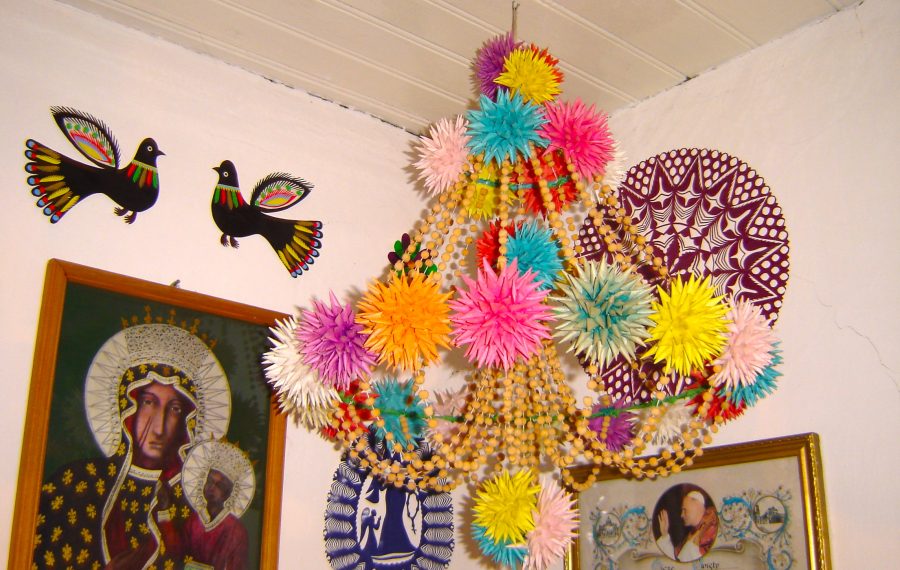
The so-called pająk (spider) chandeliers are centuries old decorations used not only for Christmas, but also other feasts. They came in all shapes. Most often they were made of straws, sometimes with very complicated structures. They were threaded with coloured tissue paper, ribbons, yarn and paper ornaments. These decorative chandeliers have become very popular now around the world and you can often find workshops to make them these days.
Pierniczki
Pierniczki – gingerbreads have for years been made and hung on branches of fir and pine in many countries, also known as Lebhkcken in Germany. They date back to the 13th century coming from the town of Toruń famous for their pierniczki. I made some recently and they are already gone. I used to make quite honey coloured ones but these last ones were spicy dark pierniczki from Ren Behan’s book “Wild Honey and Rye” and I thoroughly recommend the recipe.
Łańcuchy
Łańcuchy – paper chains only came with the advent of having a whole Christmas tree in the house which came from Germany during the early 19th century. They are made in many countries and range from simple loops to more complicated kite types as in this photo. They’re great fun and are made quickly but are said to symbolise togetherness and the road to heaven.
Baubles
Before baubles came apples, biscuits and later sweets. I remember the delight of seeing the colourful sweets placed on the table before us and only being able to eat one before we added haberdashery threads to hang them on the tree. Baubles came from Germany in the 19th century, gaining popularity as soon as they appeared in Poland and are now an absolute speciality of the Polish glass trade, exporting to Harrods and given as gifts to presidents. I particularly love concave baubles there’s a depth to them that speaks of mystery and feels very eastern, like the three kings. But returning to homemade items, since the advent of baubles, in the Kurpie region they have been decorating them with ribbons, crochet or lace.
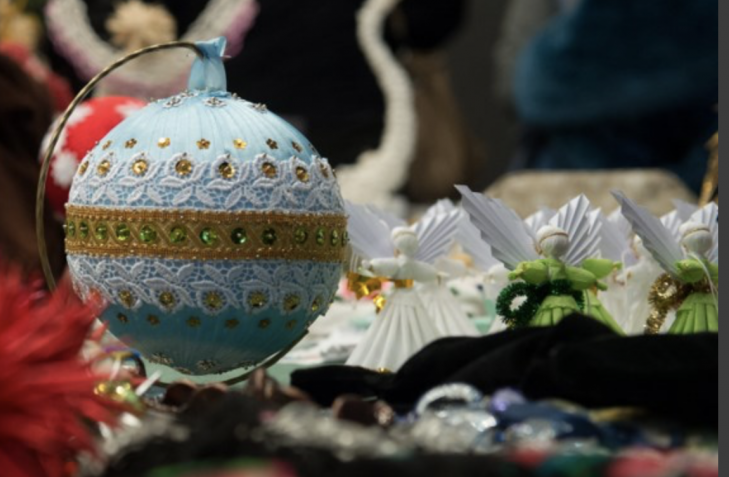
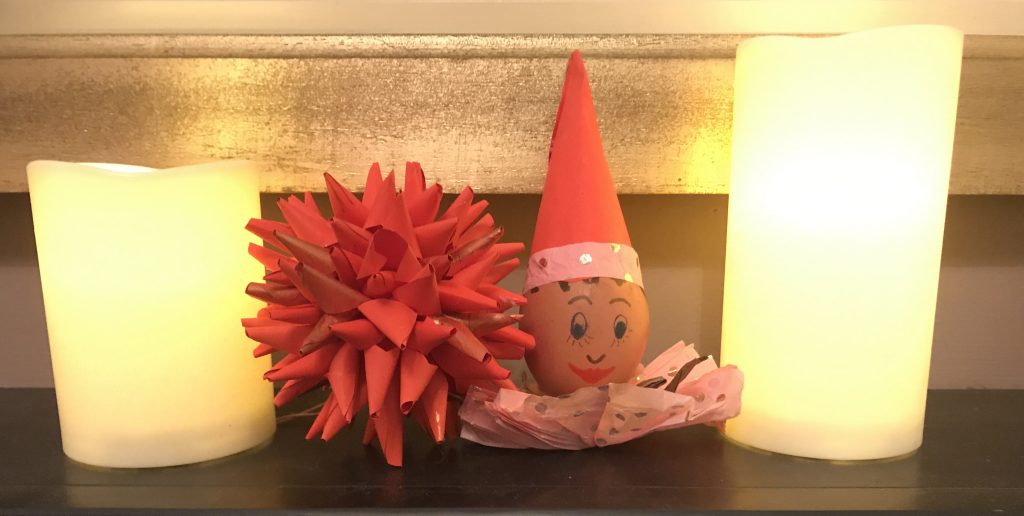
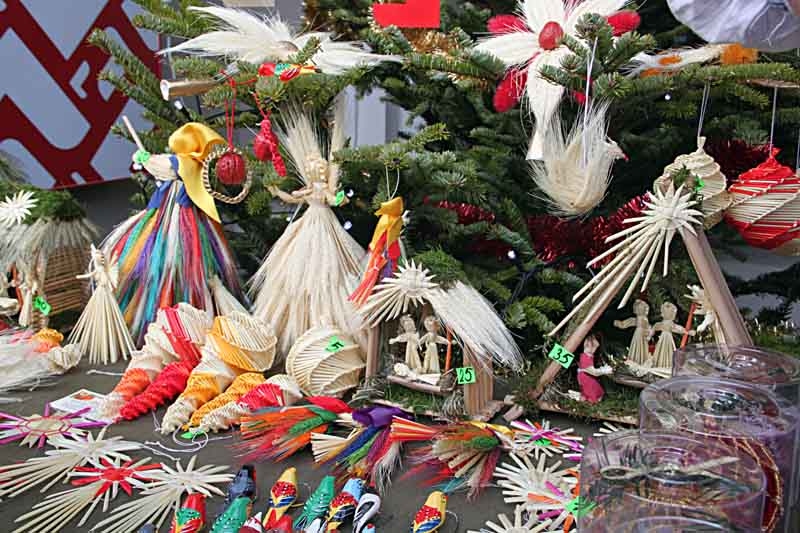
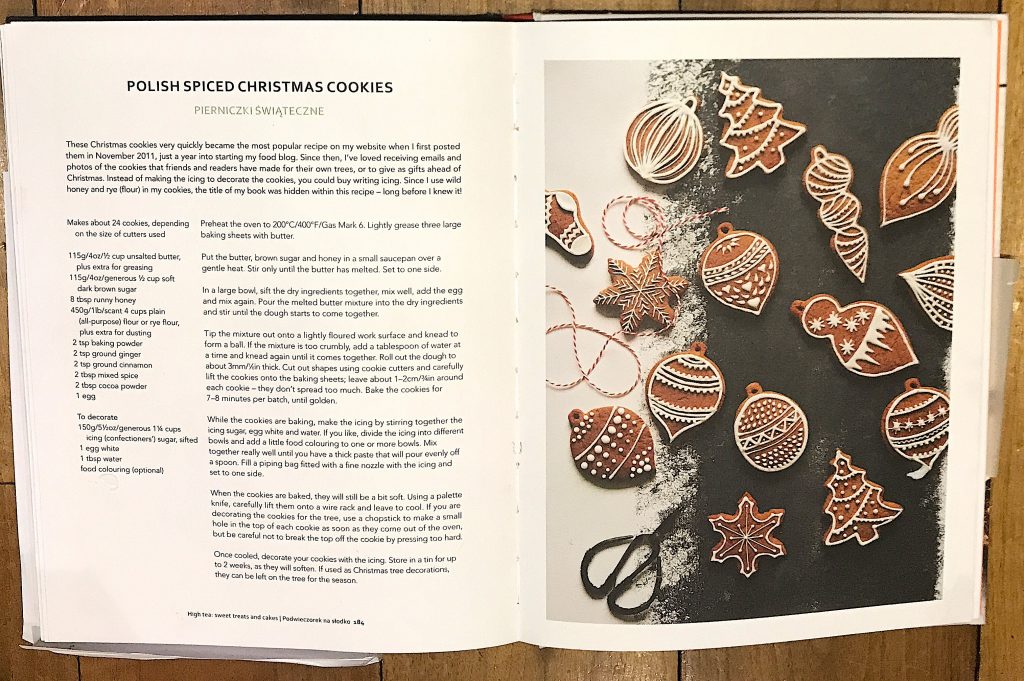
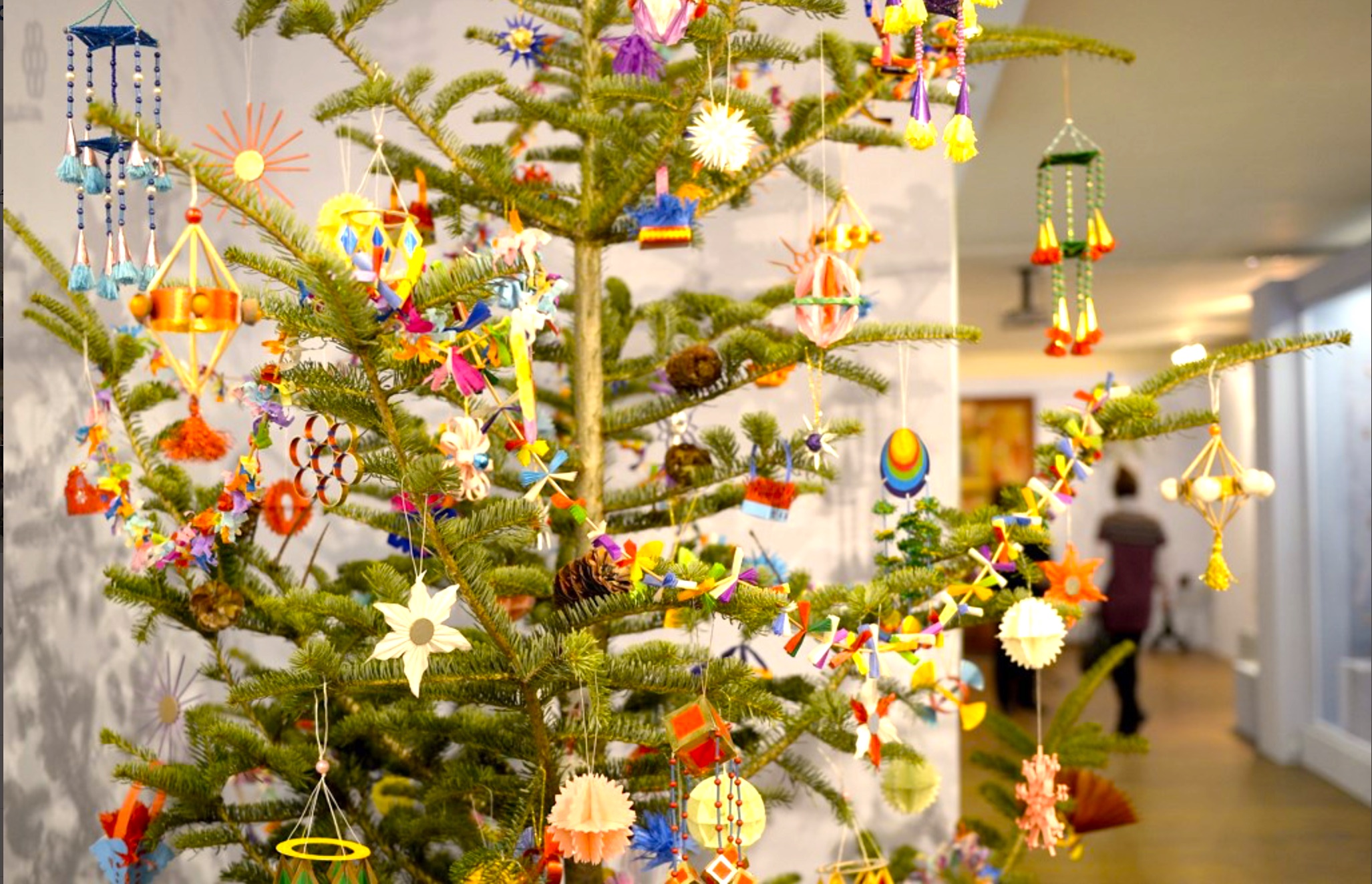
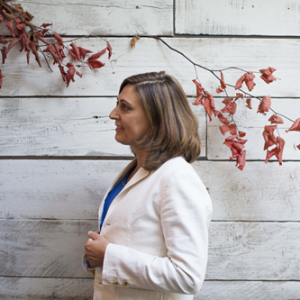
 1.Tracing Family History pre-WW2
1.Tracing Family History pre-WW2 2. Tracing Family History WW2
2. Tracing Family History WW2